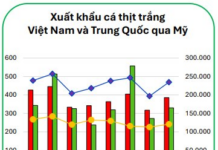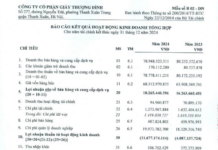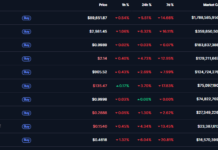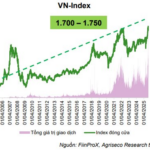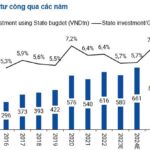The Answer Lies in the Gini Coefficient – An Overlooked Measure of Income Inequality
We often rely on GDP to assess the health of an economy. An increasing GDP suggests expanding production, consumption, and investment, indicating a thriving economy. However, have you ever wondered why, despite positive growth rates, your finances don’t seem to improve proportionally? The answer lies in another crucial yet often overlooked indicator – the Gini coefficient.
Introduced by Italian statistician Corrado Gini in 1912, the Gini coefficient measures income inequality within a society. It ranges from 0 to 1, with 0 representing absolute equality, where everyone has the same income, and 1 indicating absolute inequality, where all income is concentrated in a single individual’s hands. In reality, most countries fall somewhere between 0.25 and 0.6. The higher the number, the greater the income disparity.
Why Gini Matters
While GDP provides a panoramic view of economic scale, the Gini coefficient acts as a reflective mirror, revealing who truly benefits from economic growth. Two countries with similar growth rates but different Gini coefficients will present very different societal experiences for their citizens.
A World Bank report cautioned that countries with high inequality often face more social issues, including higher crime rates, political instability, and slower progress in poverty reduction. In contrast, societies with lower Gini coefficients, a robust middle class, and strong social cohesion tend to achieve more sustainable development.
In today’s context, where many feel that “GDP is rising, but our wallets aren’t getting thicker,” it’s time for policymakers and the public alike to pay closer attention to the Gini coefficient, rather than solely focusing on GDP figures.
Calculating the Gini Coefficient
To better understand this concept, economists often refer to the Lorenz curve . This curve illustrates the cumulative income distribution across population groups, from the poorest to the richest. If income distribution were perfectly equal, the Lorenz curve would be a 45-degree diagonal line. However, in reality, the curve always bends downward, reflecting the disparity between groups.
The Gini coefficient is the ratio of the area between two parts: the distance between the absolute equality diagonal line and the Lorenz curve, to the total area below the diagonal line. The mathematical formula is typically written as follows:
Geometrically, the coefficient is determined by dividing the area A (as shown in the illustration) formed by the Lorenz curve and the Line of equality by half of the total area of the square containing the Lorenz curve (A+B).
In terms of the formula, the Gini coefficient (g) is calculated as:
g = A / (A + B)
Where A is the area between the equality line and the Lorenz curve, and B is the area under the Lorenz curve. This formula quantifies inequality into a single number, enabling easy comparisons across countries and over time.
Since each side of the square is 1 unit (100%), the area (A+B) is always 0.5. Therefore, the Gini coefficient can also be calculated as:
g = 2A
To illustrate this concept, imagine an economy as a pizza. GDP represents the size of the pizza, while the Gini coefficient indicates how it’s divided. If the pizza grows in size but the portion for the majority remains unchanged, inequality increases. Conversely, if the pizza is divided more equally, everyone benefits from the growth.

Interpreting the Coefficient
Based on the Gini coefficient, countries can be categorized into three groups regarding income inequality. A Gini coefficient below 0.4 indicates low inequality, a coefficient between 0.4 and 0.5 signifies moderate inequality, and a coefficient above 0.5 suggests high inequality.
Currently, high inequality levels are predominantly found in Latin American and African countries, especially in Southern Africa. Conversely, Northern European countries like Norway and Denmark typically exhibit Gini coefficients around 0.25-0.27, reflecting a more equitable income distribution.
In the US, the Gini coefficient is approximately 0.39, which is considered high among developed economies. This contributes to the perception of many Americans that life is difficult, despite economic growth and low unemployment rates. In contrast, Northern European countries maintain low Gini coefficients through progressive taxation and robust social welfare systems, ensuring that citizens reap the benefits of growth.
According to the World Bank, Vietnam’s Gini coefficient has hovered around 0.35 in recent years, placing it in the middle range globally. This suggests that income disparities exist but are not overly severe. However, as the economy grows rapidly and income disparities become more pronounced, monitoring the Gini coefficient becomes increasingly crucial.
Advantages and Limitations
The Gini coefficient addresses the limitation of the Lorenz curve by quantifying income inequality. It enables comparisons of inequality across countries, regions, and time periods.
However, the method has its drawbacks. For instance, two countries could have the same Gini coefficient but different shapes for their Lorenz curves, indicating distinct income distributions among population groups. Additionally, the Gini coefficient does not allow for disaggregation by subgroups (such as rural and urban areas) and subsequent aggregation to derive a national Gini coefficient.
The Lorenz curve is also a tool used in economics to represent income inequality geometrically. It depicts the cumulative distribution of income or wealth for a given empirical distribution.
The Secret Revenue Stream Propelling Ho Chi Minh City to ‘Superstar’ Status
“Ho Chi Minh City’s merger with provinces boasting robust budgets and substantial revenue streams from real estate, coupled with a stable foundation of tax and import-export activities, has catalyzed its economic explosion. These factors have propelled the city to surpass Hanoi and claim the top spot in the country for budget revenue during the first seven months of this year.”
“Digiworld Aims for Ambitious 15-25% Annual Compound Growth, Prepares to Venture Into a New Automotive Sector”
On August 13, HSC Securities Joint Stock Company, in collaboration with Digiworld Corporation, hosted an exclusive C2C (Connecting to Customers) workshop themed “Digiworld: A Journey of Market Shaping.”

















